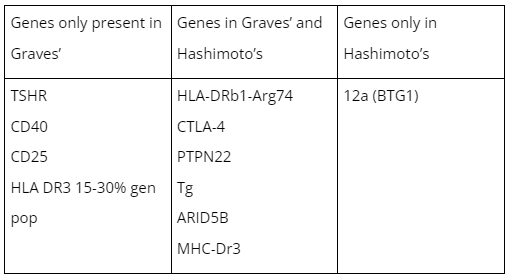As part of the final step, lymphocytes that have moved to damaged thyroid cells learn to attack thyroglobulin.14 Mature thyroid hormones that are released from the thyroid gland consist of thyroglobulin with three or four iodine atoms.
Essentially, thyroglobulin in earlier stages of development will have higher numbers of iodine atoms attached which become pared down as the final hormone is produced.
In low-iodine states, early-stage thyroglobulin may have as few as 13 iodine atoms. In high iodine diets, this can be as many as 60 atoms.
The more iodine in the diet, the more of a surplus there is on thyroglobulin. The more iodine on thyroglobulin,15 the more likely the lymphocytes will attack it.16
Ultimately, cellular studies have shown that thyroglobulin with fewer iodine atoms is unable to become a target of immune cells. In the same setting, highly iodinated thyroglobulin readily became the source of autoimmunity.17
Iodine Blocks Hormone Production
The thyroid has a protective system that is meant to keep it from overproducing hormones in times of iodine excess. This is called the Wolff-Chaikoff effect.
It was first documented as early as the 1950s.18 When too many tires get unloaded the conveyor belt breaks. Too much iodine stops hormone production.
If you didn’t have this protection, an excess of iodine could cause your heart to stop. In a lot of ways, it would essentially short-circuit your entire body.
One of the most dangerous situations in thyroid disease is called a hyperthyroid storm. This is a complication of Graves’ hyperthyroidism where the thyroid levels are so high they can be lethal.
The strongest way to stop the thyroid in this situation is mega-dose iodine. This is thanks to the Wolff-Chaikoff effect.
This effect is also why high-dose iodine is used to protect against radioactive iodine exposure. After the Fukushima nuclear disaster, many companies sold high-dose iodide as a preventive measure. The goal is to use the mechanism to stop the thyroid from absorbing iodine for a few weeks so that it won’t absorb any radioactive iodine that could lead to cancer later on.
After several weeks of inactivity, Wolff-Chaikoff’s second stage, known as the escape or adaptation phenomenon kicks in. This stage allows for normal iodine absorption and thyroid hormone production to resume.














